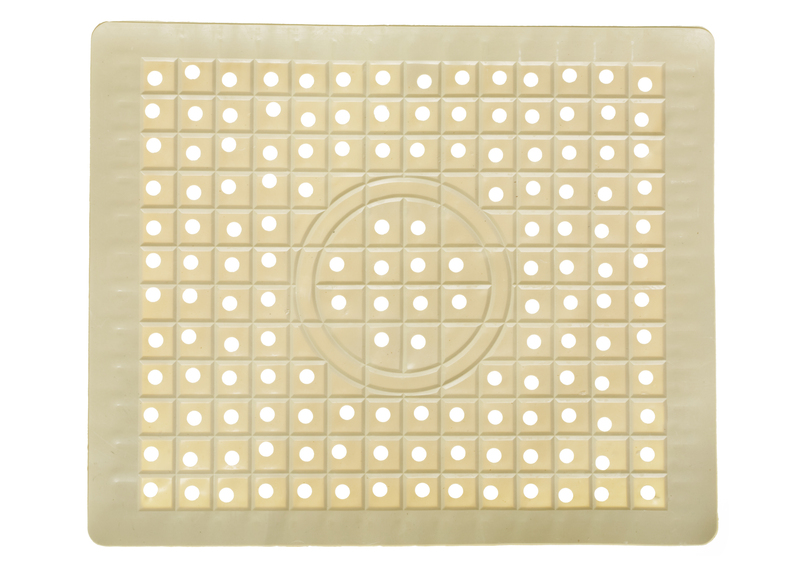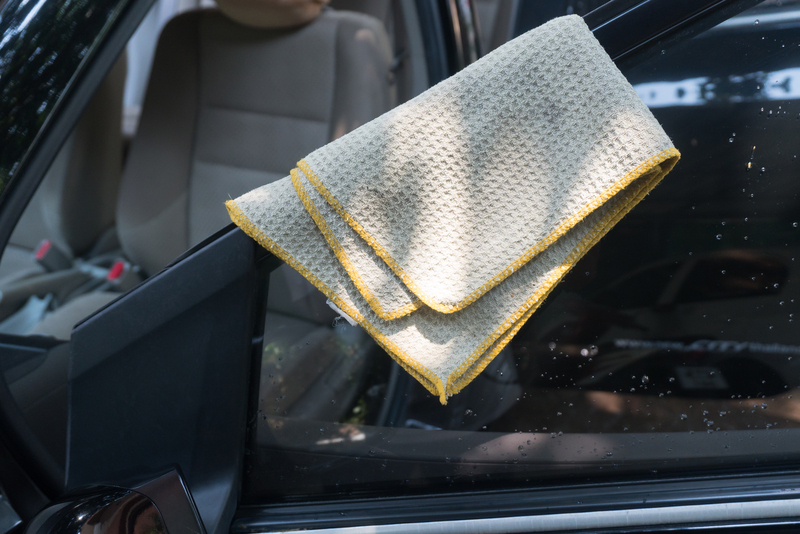Essential Tactics for Sustaining a Mold-Free Bathroom
Posted on 01/10/2025
Essential Tactics for Sustaining a Mold-Free Bathroom
A mold-free bathroom is not just an aesthetic choice; it's fundamental to safeguarding your household's health and ensuring the long-term preservation of your property. Bathrooms, by design, tend to be the dampest rooms in the home--a veritable paradise for mold spores. Left unchecked, mold can cause unsightly stains, musty odors, structural damage, and even pose health risks such as allergies or respiratory issues. This comprehensive guide outlines essential tactics and actionable steps to maintain a mold-free bathroom environment for years to come.

Why Mold Loves Bathrooms: Understanding the Problem
Mold is a type of fungus thriving in moist, warm environments, and few places fit that description better than the average bathroom. Showers, baths, and sinks introduce humidity and moisture, which, combined with inadequate ventilation and lingering water, create ideal conditions for mold growth.
Common Signs of Bathroom Mold
- Visible black, green, or orange patches on walls, ceilings, tiles, or grout
- Persistent musty or earthy odors
- Deterioration or discoloration of paint, wallpaper, or caulking
- Frequent condensation on mirrors or windows
1. Improve Bathroom Ventilation
Proper ventilation is the cornerstone of a mold-resistant bathroom. Good airflow inhibits the buildup of humidity, reducing the conditions in which mold thrives.
Effective Ventilation Tactics
- Install a Quality Exhaust Fan: Choose a fan with sufficient capacity (measured in CFM - cubic feet per minute) for your bathroom size. Run the exhaust during and for at least 20 minutes after using hot water.
- Open Windows When Possible: Natural ventilation is extremely effective. Open windows after bathing to facilitate air exchange.
- Leave the Door Ajar: Allowing bathroom doors to remain slightly open after use can encourage cross-ventilation, speeding up the drying process.
- Consider a Dehumidifier: In windowless bathrooms or humid climates, a portable dehumidifier actively removes excess moisture from the air.
2. Control Moisture at Its Source
Moisture is the root cause of mold, so your tactics must target both visible and hidden sources of water. By managing water usage and ensuring effective drainage, you'll substantially decrease the risk of an unwanted fungal invasion.
Practical Moisture Management Tips
- Fix Leaks Promptly: Regularly inspect under sinks, around the toilet base, and at shower fixtures for any drips or pooling water. Even a small leak can become a significant mold risk over time.
- Seal Tile Grout and Caulk: Refresh grouting and caulking every year or as needed, as cracks provide a perfect hiding spot for moisture and mold.
- Use Water-Repellent Surfaces: Install moisture-resistant paint, shower enclosures, and waterproof wall panels, all designed to repel water better than conventional materials.
- Squeegee After Showers: Using a simple squeegee on tiles and glass quickly removes excess water and discourages mold formation.
- Wipe Down Surfaces: Dry counters, tiles, and sink areas every day or after heavy use to minimize lingering dampness.
3. Regular Cleaning: An Indispensable Mold Prevention Tactic
Routine cleaning is a powerful strategy for a mold-free bathroom. Frequent cleaning removes both mold spores and organic materials (like soap scum and skin cells) on which mold loves to feed.
Recommended Cleaning Practices
- Disinfect Key Areas Weekly: Target grout lines, tub edges, sinks, faucets, and behind the toilet. Use a reliable bathroom cleaner with antifungal properties, or a homemade solution of vinegar and baking soda for a natural approach.
- Wash Shower Curtains and Bath Mats: Machine-wash fabric curtains and mats on a hot cycle. Plastic curtains can be cleaned with vinegar or a mild bleach solution and rinsed well.
- Clean Drains Regularly: Mold can grow in drains, unnoticed. Pour boiling water, white vinegar, or a commercial drain cleaner down your drains monthly.
- Remove Soap Scum: Soap residue is a food source for mold. Use specific scum removers or baking soda to scrub it away from tiles and glass.
4. Organization and Storage to Prevent Mold Growth
Cluttered bathrooms with poor storage setups create niches where moisture can linger and air circulation declines, making it easier for mold to develop.
Smart Storage Tactics
- Hang Up Towels and Bathmats: Damp textiles crumpled on the floor or stuffed on racks can harbor mold. Always spread them out in a ventilated spot to dry.
- Avoid Overstocking the Shower: Limit the number of bottles in the shower. Use shower caddies with drainage to prevent product buildup and trapping water underneath.
- Use Open Shelving: Open shelves allow better air flow around stored items and reduce damp, enclosed spaces where mold might fester.
5. Upgrade Materials for a Long-Lasting Mold-Free Bathroom
Modern construction and remodeling materials offer significant improvements in mold resistance. When renovating or upgrading, opt for materials specifically designed for wet environments.
Best Materials for a Moisture-Proof Bathroom
- Mold-Resistant Drywall: Green or purple drywall is engineered to withstand moisture and prevent mold better than standard drywall.
- High-Quality Caulk: Silicone caulk resists moisture and mold growth while maintaining flexibility around showers, tubs, and sinks.
- Water-Resistant Paint: Specialized bathroom paints are designed to endure humid conditions and incorporate antifungal agents.
- Sealed Tiles and Grout: Porcelain or ceramic tiles are impervious to water, especially when sealed properly. Use epoxy grout for additional mold protection.
6. Monitor and Maintain Humidity Levels
Keeping your bathroom's humidity below 60% is essential for deterring mold. Modern technology makes monitoring and adjusting humidity levels straightforward.
- Invest in a Hygrometer: This inexpensive tool gives real-time humidity readings, helping you make informed decisions regarding ventilation or dehumidifiers.
- Use Exhaust Fans Consistently: Make it a bathroom policy that fans must be used every time someone showers or bathes--post reminders if needed!
- Open Windows After Showering: Even just a crack can make a world of difference for air moisture levels.
7. Natural Remedies for Mold Prevention
While prevention is best, sometimes mold can start to take hold. In those instances, natural remedies are safe and eco-friendly.
- Vinegar Spray: White vinegar has antifungal properties. Spray undiluted vinegar on mold-prone surfaces and rinse after an hour.
- Baking Soda Paste: Scrub surfaces with baking soda and a bit of water; rinse thoroughly for a gentle, non-toxic clean.
- Tea Tree Oil Solution: A few drops of tea tree oil mixed with water creates a powerful, natural mold deterrent when sprayed on suspect areas.
8. Stay Vigilant: Routine Inspections
Frequent inspections are the secret weapon for a truly mold-free bathroom. Catching issues early means smaller, easier fixes.
- Check Hidden Areas: Inspect beneath sinks, behind the toilet, around pipes, and in storage cabinets monthly for moisture or discoloration.
- Assess for Leaks and Seal Cracks: Regularly walk through and check for any new leaks, soft spots, or visible water damage.
- Monitor Grout and Caulk Condition: Cracked or moldy caulk should be removed and replaced immediately.
9. Educate & Encourage Good Bathroom Habits
Even the best products and technology can't combat poor habits. Educate everyone in the household about simple steps to maintain a mold-free environment.
- Dry the Bath After Use: Remind users to towel off wet surfaces after bathing.
- Hang Towels Properly: Teach kids and guests the importance of spreading out towels for faster drying.
- Report Leaks Promptly: Encourage everyone to alert the household or landlord to any new drips, leaks, or water stains.
- Keep Airflow Moving: Make a habit of switching on the exhaust fan or opening the window during and after showers.

10. Know When to Call a Professional
Some mold issues can be overwhelming or hazardous, especially if large patches have developed or if mold has spread into the walls or subflooring. If you notice persistent, foul odors, extensive staining, or health symptoms, don't hesitate to seek help from mold remediation specialists. Timely, professional intervention can save you time, money, and stress while ensuring your bathroom remains mold-free.
Conclusion: Achieve a Mold-Free Bathroom for Life
Maintaining a mold-free bathroom requires ongoing vigilance, but the rewards are profound: better health, a fresher home, and bathroom surfaces that stay beautiful year after year. To recap, focus on:
- Installing and using proper ventilation
- Eliminating sources of moisture with prompt repairs
- Cleaning regularly and deeply
- Upgrading to mold-resistant materials
- Monitoring humidity
- Implementing natural cleaning solutions when needed
- Inspecting for early warning signs of mold
- Fostering mold-preventing habits among all users
- Consulting professionals at the first sign of trouble
By following these essential bathroom mold prevention tactics, you'll be well on your way to sustaining a clean, inviting, and mold-free bathroom environment for many years to come. Commit today to better bathroom habits and enjoy the peace of mind that comes with a truly healthy home!


